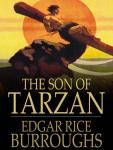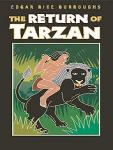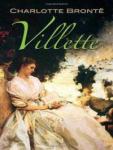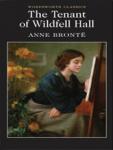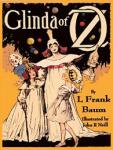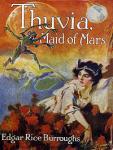The Cricket on the Hearth
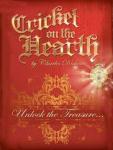
The Cricket on the Hearth. A Fairy Tale of Home is a novella by Charles Dickens.John Peerybingle, a carrier, lives with his young wife Dot, their baby boy and their nanny Tilly Slowboy. A cricket constantly chirps on the hearth and acts as a guardian angel to the family. One day a mysterious elderly stranger comes to visit and takes up lodging at Peerybingle's house for a few days.The life of the Peerybingles intersects with that of Caleb Plummer, a poor toymaker employed by the miser Mr. Tackleton. Caleb has a blind daughter Bertha, and a son Edward, who traveled to South America and was thought dead.The miser Tackleton is now on the eve of marrying Edward's sweetheart, May, but she does not love Tackleton. Tackleton reveals to John Peerybingle that his wife Dot has allegedly cheated on him and shows him a clandestine scene where Dot embraces the mysterious lodger who is in disguise, a man much younger than he actually seems. John is cut to the heart over this as he loves his wife dearly, but decides after some deliberations to relieve his wife of their marriage contract.In the end, the mysterious lodger is revealed to be none other than Edward who has returned home in disguise. Dot shows that she indeed has been faithful to John. Edward marries May hours before she is scheduled to marry Tackleton. However Tackleton's heart is melted by the Christmas season, like Ebenezer Scrooge, and he surrenders May to her true love.
Related Books
Author other works
-
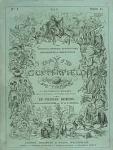
David Copperfield
Charles Dickens
David Copperfield is the common name of the eighth novel by Charles Dickens, first published as a novel in 1850. Its full title is The Personal History, Adventures, Experience and Observation of David Copperfield the Younger of Blunderstone Rookery (Which He Never Meant to Publish on Any Account). Like most of his works, it originally appeared in serial form during the two preceding years. Many elements of the novel follow events in Dickens' own life, and it is probably the most autobiographical of his novels. In the preface to the 1867 edition, Dickens wrote, "...like many fond parents, I have in my heart of hearts a favourite child. And his name is David Copperfield."The story traces the life of David Copperfield from childhood to maturity. David was born in Blunderstone, Suffolk, near Great Yarmouth, Norfolk, England, in 1820, six months after the death of his father. David spends his early years with his mother and their housekeeper, Peggotty. When he is seven years old, his mother re-marries Edward Murdstone. David is given good reason to dislike his stepfather and has similar feelings for Murdstone's sister Jane, who moves into the house soon afterwards. Murdstone thrashes David for falling behind in his studies. Following one of these thrashings, David bites him and soon afterwards is sent away to a boarding school, Salem House, with a ruthless headmaster, Mr. Creakle. There he befriends James Steerforth and Tommy Traddles.David returns home for the holidays to learn that his mother has given birth to a baby boy. Shortly after David returns to Salem House, his mother and her baby die and David returns home immediately. Peggotty marries a man named Mr Barkis. Murdstone sends David to work in a wine merchant in London, of which Murdstone is a joint owner.[4] Copperfield's landlord, Wilkins Micawber, is sent to debtors' prison (the King's Bench Prison) and remains there for several months before being released and moving to Plymouth. No one remains to care for David in London, so he decides to run away.He walks from London to Dover, where he finds his only relative, his unmarried, eccentric aunt Betsey Trotwood. She agrees to raise him, despite Murdstone's attempt to regain custody of David. David's aunt renames him "Trotwood Copperfield" and addresses him as "Trot", and it becomes one of several names to which David answers in the course of the novel.As David grows to adulthood, a variety of characters enter, leave, and re-enter his life. These include Peggotty and her family, including her orphaned niece "Little Em'ly", who moves in with them and charms the young David. David's romantic but self-serving school friend, Steerforth, seduces and dishonours Little Em'ly, precipitating the novel's greatest tragedy, and his landlord's daughter Agnes Wickfield, becomes his confidante. The novel's two most familiar characters are David's sometime mentor, the debt-ridden Micawber, and the devious and fraudulent clerk, Uriah Heep, whose misdeeds are eventually revealed with Micawber's assistance. Micawber is painted sympathetically even as the narrator deplores his financial ineptitude. Micawber, like Dickens' own father, is briefly imprisoned for insolvency.The major characters eventually get some measure of what they deserve, and few narrative threads are left hanging. Peggotty's brother Dan safely transports Emily to a new life in Australia, accompanied by the widowed Mrs. Gummidge and the Micawbers. All eventually find security and happiness in their adopted country. David marries the beautiful but naïve Dora Spenlow, who dies after failing to recover from a miscarriage early in their marriage. David then searches his soul and marries the sensible Agnes, who had always loved him and with whom he finds true happiness. David and Agnes then have at least four children, including a daughter named after his aunt Betsey Trotwood.
-
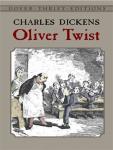
Oliver Twist
Charles Dickens
Oliver Twist, subtitled The Parish Boy's Progress, is the second novel by English author Charles Dickens, published by Richard Bentley in 1838. The story is about an orphan, Oliver Twist, who endures a miserable existence in a workhouse and then is placed with an undertaker. He escapes and travels to London where he meets the Artful Dodger, leader of a gang of juvenile pickpockets. Naively unaware of their unlawful activities, Oliver is led to the lair of their elderly criminal trainer Fagin.Oliver Twist is notable for Dickens' unromantic portrayal of criminals and their sordid lives. The book exposed the cruel treatment of many a waif-child in London, which increased international concern in what is sometimes known as "The Great London Waif Crisis": the large number of orphans in London in the Dickens era. The book's subtitle, The Parish Boy's Progress, alludes to Bunyan's The Pilgrim's Progress and also to a pair of popular 18th-century caricature series by William Hogarth, A Rake's Progress and A Harlot's Progress.An early example of the social novel, the book calls the public's attention to various contemporary evils, including child labour, the recruitment of children as criminals, and the presence of street children. Dickens mocks the hypocrisies of his time by surrounding the novel's serious themes with sarcasm and dark humour. The novel may have been inspired by the story of Robert Blincoe, an orphan whose account of hardships as a child labourer in a cotton mill was widely read in the 1830s. It is likely that Dickens's own early youth as a child labourer contributed to the story's development.
-
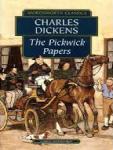
The Pickwick Papers
Charles Dickens
The Posthumous Papers of the Pickwick Club (also known as The Pickwick Papers) is the first novel by Charles Dickens. He was asked to contribute to the project as an up-and-coming writer following the success of Sketches by Boz, published in 1836 (most of Dickens' novels were issued in shilling instalments before being published in the complete volume). Dickens (still writing under the pseudonym of Boz) increasingly took over the unsuccessful monthly publication after the original illustrator Robert Seymour had committed suicide.Written for publication as a serial, The Pickwick Papers is a sequence of loosely-related adventures. The action is given as occurring 1827–8, though critics have noted some seeming anachronisms. The novel's main character, Samuel Pickwick, Esquire, is a kind and wealthy old gentleman, and the founder and perpetual president of the Pickwick Club. To extend his researches into the quaint and curious phenomena of life, he suggests that he and three other "Pickwickians" (Mr Nathaniel Winkle, Mr Augustus Snodgrass, and Mr Tracy Tupman) should make journeys to remote places from London and report on their findings to the other members of the club. Their travels throughout the English countryside by coach provide the chief theme of the novel. A distinctive and valuable feature of the work is the generally accurate descriptions of the old coaching inns of England.Its main literary value and appeal is formed by its numerous memorable characters. Each character in The Pickwick Papers, as in many other Dickens novels, is drawn comically, often with exaggerated personalities. Alfred Jingle, who joins the cast in chapter two, provides an aura of comic villainy. His devious tricks repeatedly land the Pickwickians in trouble. These include Jingle's nearly-successful attempted elopement with the spinster Rachael Wardle of Dingley Dell manor, misadventures with Dr Slammer, and others.Further humour is provided when the comic cockney Sam Weller makes his advent in chapter 10 of the novel. First seen working at the White Hart Inn in The Borough, Weller is taken on by Mr Pickwick as a personal servant and companion on his travels and provides his own oblique ongoing narrative on the proceedings. The relationship between the idealistic and unworldly Pickwick and the astute cockney Weller has been likened to that between Don Quixote and Sancho Panza.Other notable adventures include Mr Pickwick's attempts to defend a lawsuit brought by his landlady, Mrs Bardell, who (through an apparent misunderstanding on her part) is suing him for the breach of promise to marry her. Another is Mr Pickwick's incarceration at Fleet prison for his stubborn refusal to pay the compensation to her because he doesn't want to give a penny to Mrs Bardell's lawyers, the unscrupulous firm of Messrs. Dodson and Fogg. The general humorous tone is here briefly replaced by biting social satire (including against the legal establishment) and foreshadows major themes in Dickens' later books. Mr Pickwick, Sam Weller, and Weller Senior also appear in Dickens's serial, Master Humphrey's Clock.
-

A Tale of Two Cities
Charles Dickens
A Tale of Two Cities (1859) is a novel by Charles Dickens, set in London and Paris before and during the French Revolution. With well over 200 million copies sold, it ranks among the most famous works in the history of fictional literature.The novel depicts the plight of the French peasantry demoralized by the French aristocracy in the years leading up to the revolution, the corresponding brutality demonstrated by the revolutionaries toward the former aristocrats in the early years of the revolution, and many unflattering social parallels with life in London during the same time period. It follows the lives of several protagonists through these events. The most notable are Charles Darnay and Sydney Carton. Darnay is a French once-aristocrat who falls victim to the indiscriminate wrath of the revolution despite his virtuous nature, and Carton is a dissipated English barrister who endeavours to redeem his ill-spent life out of his unrequited love for Darnay's wife. The 45-chapter novel was published in 31 weekly installments in Dickens' new literary periodical titled All the Year Round. From April 1859 to November 1859, Dickens also republished the chapters as eight monthly sections in green covers. All but three of Dickens' previous novels had appeared only as monthly installments. The first weekly installment of A Tale of Two Cities ran in the first issue of All the Year Round on 30 April 1859. The last ran thirty weeks later, on 26 November.
-
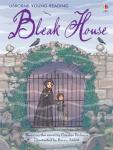
Bleak House
Charles Dickens
Bleak House is a novel by Charles Dickens, published in 20 monthly instalments between March 1852 and September 1853. It is held to be one of Dickens' finest novels, containing one of the most vast, complex and engaging arrays of minor characters and sub-plots in his entire canon. The story is told partly by the novel's heroine, Esther Summerson, and partly by a mostly omniscient narrator. Memorable characters include the menacing lawyer Tulkinghorn, the friendly but depressive John Jarndyce, and the childish and disingenuous Harold Skimpole, as well as the likeable but imprudent Richard Carstone.Sir Leicester Dedlock and Honoria, Lady Dedlock (his junior by more than 20 years) live at his estate of Chesney Wold. Unknown to Sir Leicester, Lady Dedlock had a lover, Captain Hawdon, before she married Sir Leicester — and had a child by him, Esther Summerson. Lady Dedlock, believing her daughter is dead, has chosen to live out her days 'bored to death' as a fashionable lady of the world.Esther is raised by Miss Barbary, Lady Dedlock's spartan sister, who instills a sense of worthlessness in her that Esther will battle throughout the novel. Esther doesn't know that Miss Barbary is her aunt, thinking of her only as her godmother. When Miss Barbary dies, the Chancery lawyer Conversation Kenge takes charge of Esther's future on the instruction of his client, John Jarndyce. Jarndyce becomes Esther's guardian, and after attending school in Reading for six years, Esther moves in with him at Bleak House, along with his wards, Richard Carstone and Ada Clare. Esther is to be Ada's companion.Esther soon befriends both Ada and Richard, who are cousins. They are beneficiaries in one of the wills at issue in Jarndyce and Jarndyce; their guardian is a beneficiary under another will, and in some undefined way the two wills conflict. Richard and Ada soon fall in love, but though Mr. Jarndyce doesn't oppose the match, he stipulates that Richard (who is inconstant) must first choose a profession. Richard first tries the medical profession, and Esther first meets the newly-qualified Dr. Allan Woodcourt at the house of Richard's prospective tutor, Mr. Baynham Badger. When Richard mentions the prospect of gaining from the resolution of Jarndyce and Jarndyce, John Jarndyce beseeches him never to put faith in what he calls "the family curse".Meanwhile, Lady Dedlock is also a beneficiary under one of the wills in Jarndyce and Jarndyce. Early in the book, while listening to her solicitor, the close-mouthed but shrewd Mr. Tulkinghorn, read an affidavit aloud, she recognizes the handwriting on the copy. The sight affects her so much that she almost faints, which Tulkinghorn notes and thinks should be investigated. He traces the copyist who turns out to be a pauper known only as "Nemo" who has recently died. The only person to identify him is a street-sweeper, a poor homeless boy named Jo.Lady Dedlock also investigates the matter disguised as her French maid, Mademoiselle Hortense. She pays Jo to take her to Nemo's grave. Meanwhile, Tulkinghorn is convinced that Lady Dedlock's secret might threaten the interests of his client, Sir Leicester Dedlock, and watches her constantly, even enlisting the maid, who detests her.Esther meets her mother at church and talks with her later at Chesney Wold - though, at first, neither woman recognizes the tie that binds them. Later, Lady Dedlock realizes that her abandoned child is not dead and is, in fact, Esther. She waits to confront Esther with this knowledge until Esther survives an unidentified disease (possibly smallpox, as it permanently disfigures her), which she got from the homeless boy Jo after Esther and her maid Charley attempted to nurse him back to health. Though they are happy to be reunited, Lady Dedlock tells Esther that they must never acknowledge their connection again.Esther recovers, but her beauty is supposedly ruined. She finds that Richard, having failed at several professions, has ignored his guardian and is wasting his resources in pushing Jarndyce and Jarndyce to conclusion (in his and Ada's favour). Further, he has broken with his guardian, under the influence of his lawyer, the odious and crafty Mr. Vholes. In the process of becoming an active litigant, Richard has lost all his money and is breaking his health. In further defiance of John Jarndyce, he and Ada have secretly married, and Ada is carrying Richard's child. Esther experiences her own romance when Dr. Woodcourt returns to England, having survived a shipwreck, and continues to seek her company despite her disfigurement. Unfortunately, Esther has already agreed to marry her guardian, John Jarndyce.Hortense and Tulkinghorn discover Lady Dedlock's past. After a quiet but desperate confrontation with the lawyer, Lady Dedlock flees her home, leaving a note apologizing for her conduct. Tulkinghorn dismisses Hortense, no longer any use to him. Feeling abandoned and betrayed by Lady Dedlock and Tulkinghorn, Hortense kills Tulkinghorn and seeks to frame Lady Dedlock for his murder. Sir Leicester discovers his lawyer's death and his wife's flight, and he has a catastrophic stroke but manages to communicate that he forgives his wife and wants her to return to him.Inspector Bucket, who up to now has investigated several matters on the periphery of Jarndyce and Jarndyce, accepts the commission of the stricken Sir Leicester to find Lady Dedlock. He suspects Lady Dedlock, even after he arrests George Rouncewell (the only other person known to be with Tulkinghorn on the night of the murder and to have quarrelled with him repeatedly). Bucket asks Esther to help search for Lady Dedlock. By this point, Bucket has cleared Lady Dedlock by discovering Hortense's guilt, but Lady Dedlock has no way to know this and wanders the country in cold weather before dying at the cemetery of her former lover Captain Hawdon (Nemo). Esther and Bucket find her there.Developments in Jarndyce and Jarndyce seem to take a turn for the better when a later will is found which revokes all previous wills and leaves the bulk of the estate to Richard and Ada. Meanwhile, John Jarndyce cancels his engagement with Esther, who becomes engaged to Dr. Woodcourt. They go to Chancery to find Richard and to discover what news there might be of the lawsuit's resolution. To their horror, they learn that the new will has no chance to resolve Jarndyce and Jarndyce, for the costs of litigation have consumed the estate. Richard collapses, and Dr Woodcourt determines that he is in the last stages of tuberculosis. Richard apologizes to John Jarndyce and dies, leaving Ada alone with their child, a boy she names Richard. Jarndyce takes in Ada and the child. Esther and Woodcourt marry and live in a Yorkshire house which Jarndyce gives to them. In time, they have two daughters.Many of this intricate novel's subplots deal with the minor characters and their diverse ties to the main plot. One of these subplots is the hard life and happy though difficult marriage of Caddy Jellyby and Prince Turveydrop. Another focuses on George Rouncewell's rediscovery of his family at Chesney Wold and his reunion with his mother and brother.
